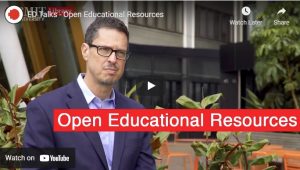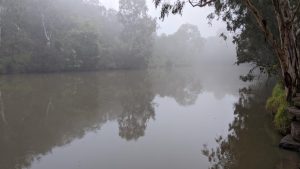8 Acknowledging Creative Commons and public domain sources
Written sources with a Creative Commons licence
For paraphrases and direct quotes:
- Create footnotes using the footnote tool in Pressbooks.
- Construct references according to your citation style.
- Add the hyperlinked Creative Commons licence type at the end of your footnoted reference, regardless of the citation style.
Examples
Footnotes in the text
Derosa and Jhangiani (n.d.) ask us to consider our hopes and vision for higher education when planning an open pedagogy project.[1]
Wiley and Hilton (2018) state that “the connection between open educational resources and open pedagogy marks a significant departure from the way the term was used in the 20th and early 21st centuries”.[2]
Reference list entries
- Wiley, D. & Hilton, J. (2018). Defining OER-enabled pedagogy. International Review of Research in Open and Distributed Learning, 19(4). http://www.irrodl.org/index.php/irrodl/article/view/3601/4724 CC BY 4.0
- Derosa, R., & Jhangiani, R. (n.d.). Open pedagogy. In E. Mays (Ed.), A guide to making textbooks with students. Rebus Community, https://press.rebus.community/makingopentextbookswithstudents/chapter/open-pedagogy/ CC BY 4.0
Note: For accessibility purposes these reference list entries have the resource titles hyperlinked, and the URLs not linked.
References for adapted Creative Commons works
If the Creative Commons source is itself an adaptation, you must also refer to the original work. Add a forward slash and the words ‘is a derivative of’, followed by the hyperlinked title of the original work, as highlighted in the example below.
Example
Reference for a derivative work with details of the original work placed after the reference
Evans, R., Mihalicz, M., & Sterling, M. (n.d.). Indigenous lifeways in Canadian business-ECO. eCampusOntario. https://ecampusontario.pressbooks.pub/ecoindigenousbusinesstopics/ CC BY-NC 4.0 / is a derivative of Indigenous lifeways in Canadian business
Figures, data or embedded media with a Creative Commons licence
Creative Commons licensed figures, embedded media or data in a table will require a correctly constructed attribution. Use the RMIT University Creative Commons Attribution Builder.
Place the attribution in brackets below the material as outlined in Chapter 11: Captions for figures, table and media.
Examples
Embedded YouTube video with attribution placed in brackets below the figure, data or embedded media
ED Talks – Open Educational Resources (3:14 mins)

Table with attribution in brackets below the table
Table 5: External wall temperatures vs air temperature, 16 January 2022, 12:00pm
| Location | Measured wall temperature | Adjacent air temperature |
| North west wall | 39oC | 32oC |
| North east wall | 38oC | 33oC |
| South west wall | 28oC | 31oC |
| South east wall | 27oC | 31oC |
(Adapted from “Building surface temperature variations” by Jake Smith, ThermoBuild is licensed under CC BY 4.0)
Figure with attribution in brackets after the caption below the image

Sources in the public domain
There are two circumstances where source material may be in the public domain:
- The original work has been placed in the public domain by the rights holder.
- Copyright on the original work has expired.
The original work has been placed in the public domain by the rights holder.
Some work placed in the public domain by the rights holder may carry the specific public domain mark, CC0. Where source materials have this, then acknowledge them as described for Creative Commons sources, including the hyperlinked public domain mark. Use the RMIT University Creative Commons Attribution Builder.
Copyright on the original work has expired
If the resource which is in the public domain does not have a CCO mark, then simply acknowledge it as for a non-Creative Commons licensed source. See Chapter 9: Using Copyright Material and Trademarks With Permission.

